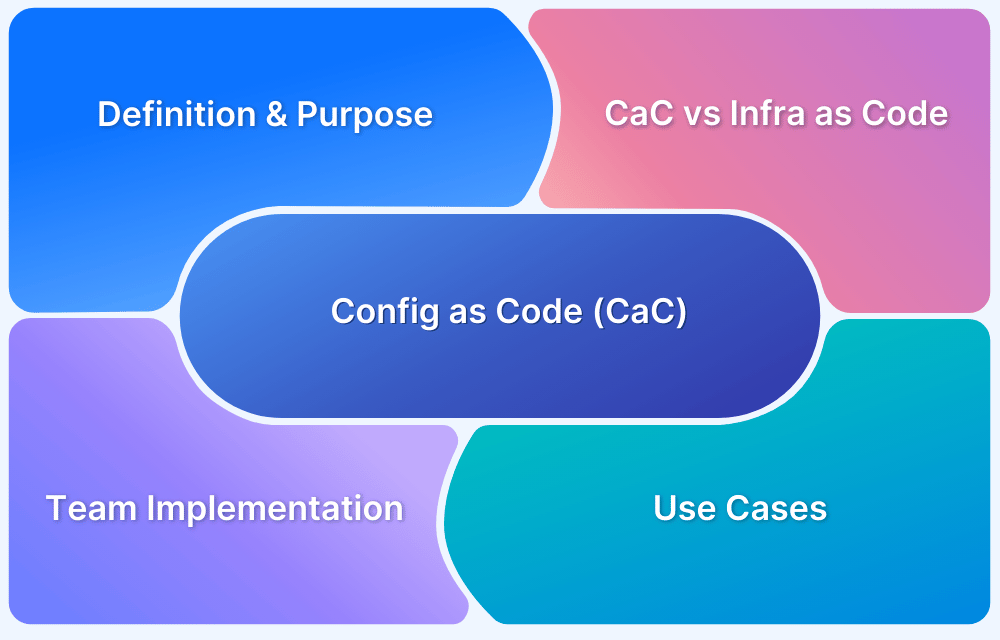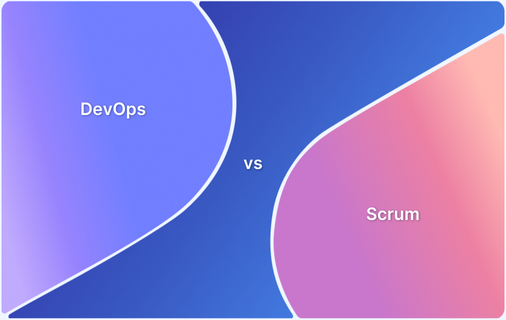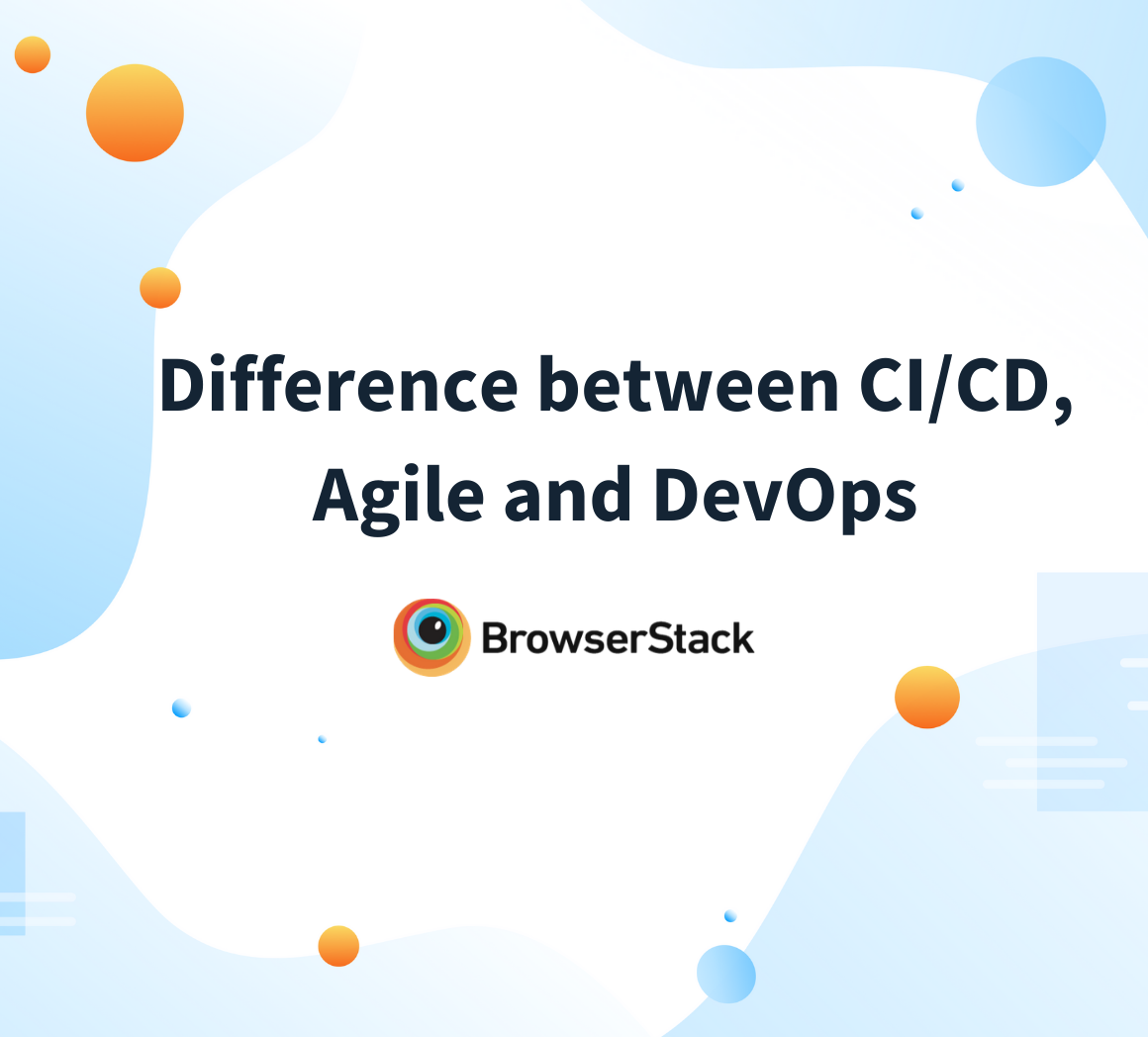DevOps Testing Strategy
By Sourojit Das, Community Contributor - October 29, 2024
DevOps for testing encourages close partnerships between software development and IT operation teams to create a frictionless software development process. In the traditional waterfall models, and sometimes even Agile, developers usually write the code and run unit tests before handing it over to the QA teams. If the QA team finds bugs, it goes back to the developers and IT operations.
Since Ops teams have a limit to how much change they can introduce to the system, there are often system crashes and production delays. This leads to all parties blaming each other and subsequently causes great friction between teams.
What is DevOps Testing?
DevOps Testing refers to the practice of integrating testing processes into the DevOps lifecycle, which combines development (Dev) and operations (Ops) to improve collaboration, efficiency, and software quality.
In a traditional development environment, testing often occurs at the end of the development cycle, leading to delays and potential bottlenecks when issues arise. However, in a DevOps approach, testing is embedded throughout the entire software development lifecycle.
This continuous testing paradigm enables teams to receive immediate feedback on the quality of their code, allowing them to identify and address issues early in the process, thus reducing the overall time and cost of development.
Automation plays a crucial role in DevOps testing, facilitating the execution of various test types—including unit, integration, and performance tests—within the continuous integration and continuous deployment (CI/CD) pipeline.
Features of DevOps Testing
Here are some of the key features of DevOps Testing:
- Continuous Testing: Enables ongoing testing throughout the development lifecycle for immediate feedback.
- Automation Testing in DevOps: Utilizes automated testing tools to accelerate the execution of various test types.
- Shift Left Approach: Introduces testing earlier in the development process to catch defects sooner. DevOps Shift Left Testing approach enables teams to build and deliver high-quality apps and features swiftly and reliably, without compromising the performance and functionality of the system.
- Collaboration and Communication: Fosters teamwork among development, testing, and operations for shared quality responsibility.
- Real-Time Monitoring and Feedback: Implements continuous monitoring for quick identification of production issues.
- Environment Consistency: Ensures uniform testing environments using containerization tools like Docker.
- Integration of Security Testing: Incorporates security assessments into the DevOps pipeline for early vulnerability detection.
- Performance Testing: Integrates performance evaluations within the CI/CD pipeline to maintain application reliability.
DevOps Testing Strategy
An optimal DevOps test strategy depends on a thorough assessment of the application under test and several cultural aspects that need to be figured out before the testing is to take place.
1. Induct the Correct Skillsets
DevOps was envisaged to eliminate miscommunications between development and operations teams and create a smooth end-to-end process. Soft skills such as empathy and clear communication are vital in bringing about a culture where testers take an active role in different stages of the development cycle.
- For instance, testers should be able to actively participate in planning meetings and communicate clearly what needs to be done and how it needs to be done to all stakeholders so that all the teams are on the same page.
- Soft skills aside, testers also need to focus on being able to acquire enough technical skills to be able to participate actively.
- The QA team is responsible for maintaining the product quality and the overall quality of the process so that the product is delivered in the shortest period possible.
In this scenario, the QA team is the gatekeeper who grants access for the project to move from one stage to another, and it is imperative.
2. Create an optimal Continuous Testing pipeline
Continuous Testing is central to the execution of a successful DevOps Testing Strategy. At the Continuous Integration stage, tests are conducted to ensure the code is valid before integrating it into the existing codebase. This is the primary step for ensuring that the software keeps working as per the requirements.
- After these automated tests have been successfully run, the code is sent to the QA team for further validation.
- The QA team concerns itself mainly with functionality testing, and then the code is moved to a staging environment.
- A final round of tests is executed in this environment before the code is shifted to production servers.
- Continuous Testing ensures that the code is tested thoroughly at every step, and this process needs to be as fully automated as possible.
- Not only does this ensure that the codebase remains fully functional and valid after every code push, it also helps accelerate the release velocity of the product.
Thus, it is imperative to ensure that this process is optimized as much as possible. Some guidelines to achieve the same are given below:
- Do the Market Research
The ultimate goal of DevOps is to prevent business risks by accelerating the release of flawless software. It is vital to investigate all the stages of the software workflows and understand those most critical to the target audience.
These workflows need to implement an optimized CI/CD pipeline as the top priority. It is not reasonably possible to optimize everything simultaneously, so it is essential to understand the hierarchy of business preferences to design automated test procedures and set up end-to-end pipelines to alleviate risks in those sectors first.
- Get Expert Opinion
Continuous Testing encompasses the entire scope of test procedures, including writing test cases, manual or automated tests, and deciding the order of test execution. It is essential to seek advice from specialists to perform risk assessments, understand critical points of failures, and determine DevOps for testing that offers quick results for a rapid turnaround.
Must Read: How to fit QA into a DevOps setup
- Adopt a Shift-Left Testing procedure
Continuous testing is the opposite of traditional test management processes, where the testing happens at the end of the software development lifecycle.
Shift-left is the philosophy that promotes that testing should be implemented across the SDLC from the creation of unit tests when code is being written and relevant testing at each stage of the life cycle. It aims to identify defects as early as possible and resolve these bugs as soon as they are detected. This leads to better software quality and reduces the time and effort in resolving bugs if they are detected late in the day.
- Get the Correct Test Data
Accurate test data forms the backbone of any robust DevOps for testing process. Continuous Testing depends on data that can replicate all the different scenarios that may occur when testing a particular scenario and is as close to real-time data as possible. It is usually not possible to get real-time production data, but the test data can be made as suitable to actual scenarios as possible through mocking and masking.
Read More: Data Driven Framework in Selenium
- Select the Right Testing Tools
Software must be fully accessible and functional in various environments and real-world devices. With websites and apps being accessed by users worldwide, they must be tested for optimality across all scenarios. The right testing tools must be selected for this task.
Using real mobile and desktop devices for testing is highly recommended, as emulators and simulators cannot fully replicate software’s functionality on real devices. Using real devices for testing allows you to take real user conditions into account while testing and ensure more accurate test results.
BrowserStack supports a variety of testing frameworks like Selenium, Cypress, Playwright, Appium, Espresso, etc. It offers access to 3000+ real browsers and devices. It is fully compatible with CI/CD tools like JIRA, Jenkins, TeamCity, CircleCI, and Travis CI, among others, and offers in-built debugging tools that allow for quick bug resolution.
3. Leverage the Power of Automation
DevOps process looks to ensure close-knit communication between the development and operations teams, and that means quick turnaround times. Thus, automation testing is key in any optimal DevOps Testing Strategy.
- One of the most common examples comes from regression testing, where after any change is pushed to the system, the entire system has to be tested to ensure that the core functionality has not been broken.
- Automation tests reduce the time required for execution and increase test efficiency.
- Automation testing on a Cloud-based Grid makes it easier to update and maintain the test suite since that part is managed by the organization supporting the grid.
BrowserStack offers a Cloud Selenium Grid of 3000+ real devices and browsers that allows users to start testing after simply signing up.
Run Automation Tests on Real Devices
- Leverage the power of Parallel Testing
An optimized test grid should enable parallel testing to allow multiple tests to be carried out side by side. Testers would be able to cut down on test times and offer quicker turnarounds to meet shorter deadlines. For example, If a single test on 45 browsers takes two minutes each, running 3 of them in parallel would reduce this time from 90 to 30 mins.
Read More: Parallel Testing: The Essential Guide
- Automate Visual Testing
Visual Testing or Visual UI testing seeks to validate that the software UI appears as expected to all users regardless of the page they are on. It checks whether every web element is represented on the screen in the correct dimensions and functions as expected.
Testers usually compare browser snapshots to perform these tests manually, but tools like Percy by BrowserStack can automate this laborious process by saving screenshots and comparing them to baseline images. It provides automated reporting on any visual changes. It makes it possible to commit code to production, knowing that the look and feel of the site are as valid as the functionality within.
Run Automated Visual Tests on Percy
4. Setup Continuous Monitoring Processes
Once the CI/CD pipeline has been set up and the Continuous Testing process optimized using automated testing, the third pillar of the DevOps testing strategy comes into play, viz. Continuous Monitoring (CM).
This is an automated process for DevOps engineers to observe and monitor any issues that may fall foul of compliance regulations and detect any security threats to the pipeline.
After the software has been deployed to production servers, CM is expected to be able to keep Development and QA teams abreast of any issues in the environment. The feedback on the issues allows dedicated teams to work out fixes for a quick turnaround and allows the DevOps team to stay on top of things.
Continuous Monitoring has three varieties –
- Infrastructure Monitoring: This collects and analyses data about the infrastructure on which the software runs, including data centers, servers, networks, storage, and the like.
- Application Monitoring: This monitors software performance, including uptime, system and API responses, transaction times, etc.
- Network Monitoring: This is in charge of tracking firewalls, routers, switches, and other network components on which the deployed software depends.
Ensuring CM is successfully implemented allows for –
- Better visibility into the network metrics to preempt outages and discover trends.
- Allow for quicker response time to issues in production
- Reduces the risk of system downtime as there is a continuous overwatch on the system components at all times
Role of Test Automation Tools in DevOps Testing
Test automation tools play a crucial role in DevOps testing by streamlining the testing process, enhancing collaboration, and improving software quality. Automation enhances DevOps Testing by:
- Accelerating Testing Processes: Automated tests can be executed much faster than manual tests, allowing for quicker feedback and more frequent releases.
- Increase Test Coverage: Automated testing enables teams to run a larger number of tests across various environments, improving test coverage and reducing the risk of defects.
- Consistency and Reliability: They are executed consistently, reducing human error and ensuring that tests yield the same results every time.
- Early Detection of Defects: Automation tools help catch defects sooner, leading to reduced costs and faster resolutions.
- Regression Testing: Automated tests can be easily rerun after each code change, ensuring that new features do not introduce regressions.
Why choose BrowserStack Automate in DevOps Testing?
BrowserStack Automate is the one-stop solution for Automated DevOps Testing due to the following reasons:
- Parallel testing: BrowserStack Automate allows you to run tests in parallel on different devices and browser combinations.
- Test on 3500+ real devices: You can test comprehensively on 3500+ real devices and browsers using BrowserStack. This helps solve device fragmentation.
- Test under real user conditions: Testing on real world conditions help you understand how the users experience your application. BrowserStack Automate allows you to test under real circumstances, and get accurate results.
- Integration with Automation Frameworks: BrowserStack Automate supports all popular Test Automation frameworks like Selenium, Cypress, Playwright, Puppeteer, Nightwatch, Appium, etc.
- Integration with CI/CD tools: BrowserStack Integrates well with most of the popular CI/CD tools like Jenkins, CircleCI, Travis CI, Bamboo, GitHub Action, Azure Pipelines, Drone, Semaphore, etc.
DevOps Testing Best Practices
Here are best practices to follow in DevOps Testing:
- Shift Left Approach: Involve testing early in the development lifecycle.
- Automate Testing: Use automated tests for faster feedback and efficiency.
- Choose the Right Tools: Leverage appropriate testing frameworks and tools.
- Continuous Testing: Integrate testing into CI/CD pipelines for frequent execution.
- Version Control: Store test scripts in version control alongside code.
- Environment Consistency: Use containers to create consistent test environments.
- Monitor Performance: Implement monitoring to identify production issues early.
- Exploratory Testing: Combine automated tests with exploratory testing for deeper insights.
- Focus on UX: Incorporate user experience testing for better user satisfaction.
- Regular Reviews: Conduct regular retrospectives to improve testing processes.
- Integrate Security: Include security testing in the development process (DevSecOps).
- Ongoing Training: Provide continuous education on tools and best practices for the team.
Useful Resources for DevOps
Understanding DevOps:
- What is DevOps
- DevOps Shift Left Testing: A Detailed Guide
- What is the ultimate goal of DevOps?
- Benefits of DevOps
- What is DevOps Configuration Management?
- What is Continuous Delivery in DevOps?
- What is a DevOps Pipeline? How to Build One
- What is DevOps Observability (Importance & Best Practices)
- DevOps Testing Strategy
- How to improve DevOps Feedback Loop
- Python For DevOps: An Ultimate Guide
- What is DevOps Automation and How is it Helpful?
- Importance of DevOps Team Structure
- The Role of QA in DevOps
- Top Challenges in DevOps and How to Solve Them
- Top 21 Monitoring Tools in DevOps for 2024
Know the difference:
- DevOps vs Scrum: Key Differences
- Breaking Down MLOps vs DevOps: Similarities and Differences
- DevOps vs SysOps: What are the major differences
- DataOps vs DevOps: Key Differences
- TechOps, DevOps, and NoOps: Which one is right for you?
- DevOps vs CloudOps: How are they different
- DevOps Engineer vs Full Stack Developer: Differences
- Synchronize Business Analysis, DevOps, and QA with Cloud Testing
Conclusion
The rapid adoption of DevOps for testing by software organizations speaks volumes about its efficiency and efficacy as a software development process. With release cycles getting shorter and shorter and the onus to produce optimally working products increasing, it is vital to have a sound DevOps testing strategy that saves time and effort while maintaining high product quality.




